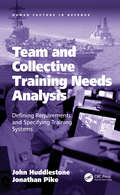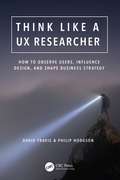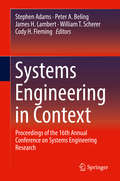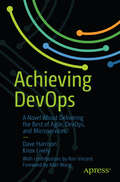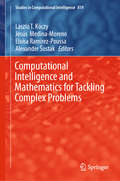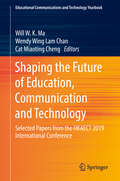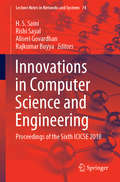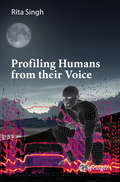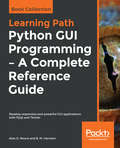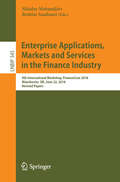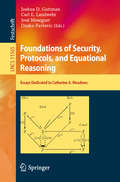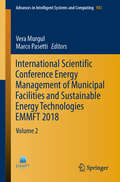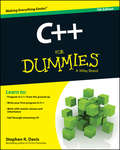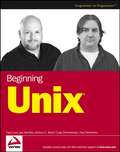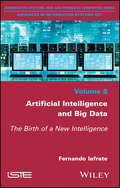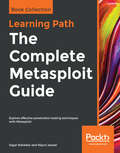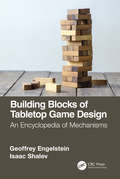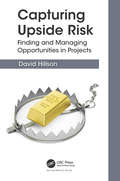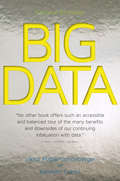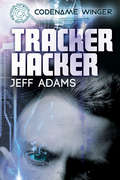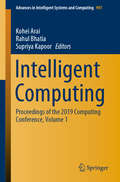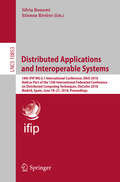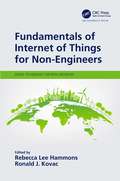- Table View
- List View
Team and Collective Training Needs Analysis: Defining Requirements and Specifying Training Systems (Human Factors in Defence)
by Jonathan Pike John HuddlestoneMilitary capability is delivered operationally at a team and collective level, be it a unit as small as a squad or section, or as large as a maritime task group. Modern military forces are required to deal with a potentially wide range of missions frequently involving multiple alliance partners, within a geopolitical environment which can seem to change rapidly. Individual performance, while being important, is not the primary determinant of mission success - force integration, interoperability, adaptability and teamwork are key factors. Team and collective training which fully addresses these factors is fundamental to the development and delivery of military capability. As a consequence, the requirement to determine training requirements and specify effective systems for the delivery of team and collective training is critical to operational success. Training Needs Analysis (also known as Front End Analysis), is a well-established methodology for analysing training requirements and specifying training solutions used extensively by the UK and its NATO partners. However, the analytical techniques employed are optimised for individual training, with little guidance being offered on its application in the team and collective context. Team and Collective Training Needs Analysis (TCTNA) has been developed to close this methodological gap. It addresses the issues of the relationship of individual and team tasks, teamwork, command and control, task and training environments, scenario definition, instructional strategy, team training approaches, instructional functions, and wide-ranging organisational and procurement considerations. Part One of the book develops an integrated set of models which underpin the analytical approach presented in Part Two. Worked examples and case studies illustrate the application of the approach. Between 2005 and 2015 the authors worked on numerous training-related research projects at Cranfield University and Coventry University for the Human Factors Integration Defence Technology Centre and the Defence Human Capability Science and Technology Centre on behalf of the Defence Science and Technology Laboratory, UK Ministry of Defence.
Think Like a UX Researcher: How to Observe Users, Influence Design, and Shape Business Strategy
by David Travis Philip HodgsonThink Like a UX Researcher will challenge your preconceptions about user experience (UX) research and encourage you to think beyond the obvious. You’ll discover how to plan and conduct UX research, analyze data, persuade teams to take action on the results and build a career in UX. The book will help you take a more strategic view of product design so you can focus on optimizing the user’s experience. UX Researchers, Designers, Project Managers, Scrum Masters, Business Analysts and Marketing Managers will find tools, inspiration and ideas to rejuvenate their thinking, inspire their team and improve their craft. Key Features A dive-in-anywhere book that offers practical advice and topical examples. Thought triggers, exercises and scenarios to test your knowledge of UX research. Workshop ideas to build a development team’s UX maturity. War stories from seasoned researchers to show you how UX research methods can be tailored to your own organization.
Adobe® Photoshop® Creative Cloud, Comprehensive
by Joy StarksADOBE PHOTOSHOP CREATIVE CLOUDTM: COMPREHENSIVE, 1st Edition has been fully revised to meet Adobe’s most recent Creative Cloud updates. Coverage of the newest Photoshop functions and tools bring relevancy to your course while helping you maximize your potential with the Photoshop software and familiarize themselves with the Creative Cloud. Part of the highly successful Shelly Cashman Series, ADOBE PHOTOSHOP CREATIVE CLOUD: COMPREHENSIVE, 1ST Edition follows the proven Shelly Cashman Series step-by-step, screen-by-screen approach to learning the Photoshop software. In this text, you will find features designed to engage, improve retention, and prepare you for future success. Expand your understanding of the Photoshop software and graphic design concepts through experimentation, exploration and planning ahead. End of chapter exercises prepare you to become a more capable software user by requiring you to use critical-thinking and problem-solving skills.
Becoming A Digital Marketer: Gaining The Hard And Soft Skills For A Tech-Driven Marketing Career
by Gil Gildner Anya GildnerIn the rapidly paced world of marketing, fresh graduates and traditional marketers alike are learning that the industry is blending with technology at a rate never before seen. <p><p> It's no longer enough to just be a traditional marketer: in today's tech-driven industry, you've got to be able to build websites, install analytics, run pay-per-click campaigns, join Twitter chats, understand SEO strategy, and experience the underrated power of email marketing. In Part 1, you'll learn the hard skills crucial to a marketing career, like: search engine optimization (SEO), pay-per-click advertising (PPC), social media marketing, reporting & analytics, web development, and email marketing. <p> In Part 2, you'll read about the soft skills essential to business, likewriting emails, getting your first entry level position, working as a marketing freelancer, starting your marketing agency, and how to work remotely. <p> Also included are in-depth vignettes and interviews with renowned communicators for insightful alternate views on what makes a successful marketer.Authors Gil & Anya Gildner are the cofounders of Discosloth, a search marketing company that has worked with brands like Volvo, MSF, AirTreks, and have been featured in Inc Magazine, the New York Times, Arkansas Business, the Washington Post, and more. They regularly speak at industry conferences and conduct corporate & academic training seminars.
Systems Engineering in Context: Proceedings of the 16th Annual Conference on Systems Engineering Research
by William T. Scherer James H. Lambert Stephen Adams Peter A. Beling Cody H. FlemingThis volume chronicles the 16th Annual Conference on System Engineering Research (CSER) held on May 8-9, 2018 at the University of Virginia, Charlottesville, Virginia, USA. The CSER offers researchers in academia, industry, and government a common forum to present, discuss, and influence systems engineering research. It provides access to forward‐looking research from across the globe, by renowned academicians as well as perspectives from senior industry and government representatives. Co‐founded by the University of Southern California and Stevens Institute of Technology in 2003, CSER has become the preeminent event for researchers in systems engineering across the globe. Topics include though are not limited to the following: Systems in context: · Formative methods: requirements · Integration, deployment, assurance · Human Factors · Safety and Security Decisions/ Control & Design; Systems Modeling: · Optimization, Multiple Objectives, Synthesis · Risk and resiliency · Collaborative autonomy · Coordination and distributed decision-making Prediction: · Prescriptive modeling; state estimation · Stochastic approximation, stochastic optimization and control Integrative Data engineering: · Sensor Management · Design of Experiments
Achieving DevOps: A Novel About Delivering the Best of Agile, DevOps, and Microservices
by Dave Harrison Knox LivelyBen is stuck. A development lead with a strong vision for how the intersection of development and operations at his office can be improved, he can’t help but feel overwhelmed and discouraged by common problems such as slow turnaround time, rushed and ineffective handover documentation, mounting technical debt, and a lagging QA process. What steps should Ben take to build the momentum needed to create positive changes within his company? In this unique business novel by Dave Harrison and Knox Lively, two DevOps professionals with years of diverse experience in the industry, you follow Ben as he solves work frustrations in order to adopt Agile, DevOps, and microservices architectures for his organization. Achieving DevOps addresses the “Now what?” moment many DevOps professionals face on their journey. The story provides you with the knowledge you need to navigate the internal political waters, build management support, show measurable results, and bring DevOps successfully into your organization.Come away with practical lessons and timeless business concepts. You’ll know how to effect change in a company from the bottom up, gain support, and instill a pattern of progressively building on success. Experience Ben’s progress vicariously in Achieving DevOps and bridge the gap between inspiration and the implementation of your own DevOps practices.Who This Book Is ForThose serving as change agents who are working to influence and move their organizations toward a DevOps approach to software development and deployment: those working to effect change from the bottom up such as development leads, QA leads, project managers, and individual developers; and IT directors, CTOs, and others at the top of an organization who are being asked to lend their support toward DevOps implementation efforts
Computational Intelligence and Mathematics for Tackling Complex Problems (Studies in Computational Intelligence #819)
by Jesús Medina-Moreno Eloísa Ramírez-Poussa László T Kóczy Alexander ŠostakThis book combines computational intelligence and mathematics to solve theoretical and real-world problems. The real challenges of engineering and other applied sciences, e.g. economics and management, the social sciences, etc., and even everyday life, are increasingly raising complex problems – both in the usual sense, but also in the mathematical and theoretical computer science sense, which is referred to as intractability. Finding exact solutions to the latest problems in mathematics is impossible, and it has been also shown that no further technical advance will ever make it possible to find general and exact solutions to such complex problems. Rather, the goal is to find solutions that are “good enough” or “acceptably accurate,” including models and corresponding algorithms, which is most often achieved by combining traditional mathematical techniques and computational intelligence tools, such as fuzzy systems, evolutionary and memetic algorithms, and artificial neural networks. Consequently, international funding programs, such as the European Commission’s current framework program for research and innovation (Horizon 2020), and the preliminary research team building COST Actions, are devoted to developing new instruments for tackling the challenges that we face in the current technological age. And it goes without saying that research topics concerning the interactions between computational intelligence and traditional mathematics play a key role in overcoming the obstacles associated with the intractability of complex problems. In this book, mathematicians, engineers, and other scientists highlight novel methodological results connecting these two main research areas, and focusing on solving real-life problems.
Shaping the Future of Education, Communication and Technology: Selected Papers from the HKAECT 2019 International Conference (Educational Communications and Technology Yearbook)
by Will W. K. Ma Wendy Wing Lam Chan Cat Miaoting ChengThis book gathers selected papers from the Hong Kong Association for Educational Communications and Technology 2019 International Conference on the theme of “Shaping the Future of Education, Communication and Technology.” It contributes to a scholarly discussion that looks beyond what future media and technology can offer for education, and reflects on best practices and lessons learned from applying new media and technology in a wide range of fields. Scholars from educational technology, communication, and higher education share their research work in various formats such as empirical research, best-practice case studies, literature reviews, etc. The topics of the papers are divided into four main areas, including curriculum, pedagogy and instructional design; teaching and learning experiences with technology; online learning and open education resources; and communication and media. The book’s unique quality is its combination of perspectives and research work on communication, education and technology. Thus, it will encourage an interdisciplinary discourse and exchange concerning communication, new media, and educational practices.
Innovations in Computer Science and Engineering: Proceedings of the Sixth ICICSE 2018 (Lecture Notes in Networks and Systems #74)
by Rajkumar Buyya H. S. Saini Rishi Sayal Aliseri GovardhanThis book includes high-quality, peer-reviewed research papers from the 6thInternational Conference on Innovations in Computer Science & Engineering (ICICSE 2018), held at Guru Nanak Institutions, Hyderabad, India from August 17 to 18, 2018. The book discusses a wide variety of industrial, engineering and scientific applications of the emerging techniques and offers a platform for researchers from academia and industry to present their original work and exchange ideas, information, techniques and applications in the field of computer science.
Profiling Humans from their Voice
by Rita SinghThis book is about recent research in the area of profiling humans from their voice, which seeks to deduce and describe the speaker's entire persona and their surroundings from voice alone. It covers several key aspects of this technology, describing how the human voice is unique in its ability to both capture and influence the human persona -- how, in some ways, voice is more potent and valuable then DNA and fingerprints as a metric, since it not only carries information about the speaker, but also about their current state and their surroundings at the time of speaking. It provides a comprehensive review of advances made in multiple scientific fields that now contribute to its foundations. It describes how artificial intelligence enables mechanisms of discovery that were not possible before in this context, driving the field forward in unprecedented ways. It also touches upon related and relevant challenges posed by voice disguise and other mechanisms of voice manipulation. The book acts as a good resource for academic researchers, and for professional agencies in many areas such as law enforcement, healthcare, social services, entertainment etc.
Python GUI Programming - A Complete Reference Guide: Develop responsive and powerful GUI applications with PyQt and Tkinter
by Alan D. Moore B. M. HarwaniExplore Python's GUI frameworks and create visually stunning and feature-rich applications Key Features Integrate stunning data visualizations using Tkinter Canvas and Matplotlib Understand the basics of 2D and 3D animation in GUI applications Explore PyQt's powerful features to easily design and customize your GUI applications Book Description A responsive graphical user interface (GUI) helps you interact with your application, improves user experience, and enhances the efficiency of your applications. With Python, you'll have access to elaborate GUI frameworks that you can use to build interactive GUIs that stand apart from the rest. This Learning Path begins by introducing you to Tkinter and PyQt, before guiding you through the application development process. As you expand your GUI by adding more widgets, you'll work with networks, databases, and graphical libraries that enhance its functionality. You'll also learn how to connect to external databases and network resources, test your code, and maximize performance using asynchronous programming. In later chapters, you'll understand how to use the cross-platform features of Tkinter and Qt5 to maintain compatibility across platforms. You'll be able to mimic the platform-native look and feel, and build executables for deployment across popular computing platforms. By the end of this Learning Path, you'll have the skills and confidence to design and build high-end GUI applications that can solve real-world problems. This Learning Path includes content from the following Packt products: Python GUI Programming with Tkinter by Alan D. Moore Qt5 Python GUI Programming Cookbook by B. M. Harwani What you will learn Visualize graphs in real time with Tkinter's animation capabilities Use PostgreSQL authentication to ensure data security for your application Write unit tests to avoid regression when updating code Handle different signals generated on mouse clicks using QSpinBox and sliders Employ network concepts, internet browsing, and Google Maps in UI Use graphics rendering to implement animations in your GUI Who this book is for If you're an intermediate Python programmer looking to enhance your coding skills by writing powerful GUIs in Python using PyQT and Tkinter, this is an ideal Learning Path for you. A strong understanding of the Python language is a must to grasp the concepts explained in this book.
Enterprise Applications, Markets and Services in the Finance Industry: 9th International Workshop, FinanceCom 2018, Manchester, UK, June 22, 2018, Revised Papers (Lecture Notes in Business Information Processing #345)
by Nikolay Mehandjiev Brahim SaadouniThis book constitutes revised selected papers from the 9th International Workshop on Enterprise Applications, Markets and Services in the Finance Industry, FinanceCom 2018, held in Manchester, UK, in June 2018. The 11 papers presented in this volume were carefully reviewed and selected from 18 submissions. They were organized in topical sections named: financial innovation; market data analytics; and semantic modelling.
Foundations of Security, Protocols, and Equational Reasoning: Essays Dedicated to Catherine A. Meadows (Lecture Notes in Computer Science #11565)
by Joshua D. Guttman Carl E. Landwehr José Meseguer Dusko PavlovicThis Festschrift volume is published in honor of Catherine A. Meadows and contains essays presented at the Catherine Meadows Festschrift Symposium held in Fredericksburg, VA, USA, in May 2019.Catherine A. Meadows has been a pioneer in developing symbolic formal verification methods and tools. Her NRL Protocol Analyzer, a tool and methodology that embodies symbolic model checking techniques, has been fruitfully applied to the analysis of many protocols and protocol standards and has had an enormous influence in the field. She also developed a new temporal logic to specify protocol properties, as well as new methods for analyzing various kinds of properties beyond secrecy such as authentication and resilience under Denial of Service (DoS) attacks and has made important contributions in other areas such as wireless protocol security, intrusion detection, and the relationship between computational and symbolic approaches to cryptography. This volume contains 14 contributions authored by researchers from Europe and North America. They reflect on the long-term evolution and future prospects of research in cryptographic protocol specification and verification.
International Scientific Conference Energy Management of Municipal Facilities and Sustainable Energy Technologies EMMFT 2018: Volume 2 (Advances in Intelligent Systems and Computing #983)
by Vera Murgul Marco PasettiThis book presents a collection of the latest studies on and applications for the sustainable development of urban energy systems. Based on the 20th International Scientific Conference on Energy Management of Municipal Facilities and Sustainable Energy Technologies, held in Voronezh and Samara, Russia from 10 to 13 December 2018, it addresses a range of aspects including energy modelling, materials and applications in buildings; heating, ventilation and air conditioning systems; renewable energy technologies (photovoltaic, biomass, and wind energy); electrical energy storage; energy management; and life cycle assessment in urban systems and transportation.The book is intended for a broad readership: from policymakers tasked with evaluating and promoting key enabling technologies, efficiency policies and sustainable energy practices, to researchers and engineers involved in the design and analysis of complex systems.
C++ For Dummies
by Stephen R. DavisEnter the world of computer programming with this step-by-step guide to the C++ language! C++ is a great introduction to object-oriented programming, and this friendly guide covers everything you need to know and nothing you don't. You'll write your first program by the end of Chapter 1.C++ For Dummies, 6th Edition, helps you understand C++ programming from the ground up. It's full of examples to show you how things work, and it even explains "why", so you understand how the pieces fit together. And the bonus CD includes a special code editor, an update GNU compiler, and all source code from the book to save you time.Learn programming lingo and what terms like object-oriented, compiler, and executable mean, so you can write a program right awaySee how to bundle sections of your code into modules that can be reused in different programsWork with features of object-oriented programming such as classes, constructors, and destructorsDiscover how the concept of inheritance is the key to effective C++ programmingWork with assignment operators, stream I/O, and other more advanced concepts, once you've grasped the basicsYou'll discover ten ways to avoid adding bugs to your programs, what pointers are and how to use them, how to work with strings, and some advanced features new to C++. C++ For Dummies, 6th Edition gets you up and running with this popular object-oriented language.Note: CD-ROM/DVD and other supplementary materials are not included as part of eBook file.
Beginning Unix
by Paul Love Jeremy C. Reed Craig Zimmerman Paul Weinstein Joe MerlinoCovering all aspects of the Unix operating system and assuming no prior knowledge of Unix, this book begins with the fundamentals and works from the ground up to some of the more advanced programming techniques The authors provide a wealth of real-world experience with the Unix operating system, delivering actual examples while showing some of the common misconceptions and errors that new users make Special emphasis is placed on the Apple Mac OS X environment as well as Linux, Solaris, and migrating from Windows to Unix A unique conversion section of the book details specific advice and instructions for transitioning Mac OS X, Windows, and Linux users
Artificial Intelligence and Big Data: The Birth of a New Intelligence
by Fernando IafrateWith the idea of “deep learning” having now become the key to this new generation of solutions, major technological players in the business intelligence sector have taken an interest in the application of Big Data. In this book, the author explores the recent technological advances associated with digitized data flows, which have recently opened up new horizons for AI. The reader will gain insight into some of the areas of application of Big Data in AI, including robotics, home automation, health, security, image recognition and natural language processing.
The Complete Metasploit Guide: Explore effective penetration testing techniques with Metasploit
by Nipun Jaswal Sagar RahalkarMaster the Metasploit Framework and become an expert in penetration testing. Key Features Gain a thorough understanding of the Metasploit Framework Develop the skills to perform penetration testing in complex and highly secure environments Learn techniques to integrate Metasploit with the industry's leading tools Book Description Most businesses today are driven by their IT infrastructure, and the tiniest crack in this IT network can bring down the entire business. Metasploit is a pentesting network that can validate your system by performing elaborate penetration tests using the Metasploit Framework to secure your infrastructure. This Learning Path introduces you to the basic functionalities and applications of Metasploit. Throughout this book, you'll learn different techniques for programming Metasploit modules to validate services such as databases, fingerprinting, and scanning. You'll get to grips with post exploitation and write quick scripts to gather information from exploited systems. As you progress, you'll delve into real-world scenarios where performing penetration tests are a challenge. With the help of these case studies, you'll explore client-side attacks using Metasploit and a variety of scripts built on the Metasploit Framework. By the end of this Learning Path, you'll have the skills required to identify system vulnerabilities by using thorough testing. This Learning Path includes content from the following Packt products: Metasploit for Beginners by Sagar Rahalkar Mastering Metasploit - Third Edition by Nipun Jaswal What you will learn Develop advanced and sophisticated auxiliary modules Port exploits from Perl, Python, and many other programming languages Bypass modern protections such as antivirus and IDS with Metasploit Script attacks in Armitage using the Cortana scripting language Customize Metasploit modules to modify existing exploits Explore the steps involved in post-exploitation on Android and mobile platforms Who this book is for This Learning Path is ideal for security professionals, web programmers, and pentesters who want to master vulnerability exploitation and get the most of the Metasploit Framework. Basic knowledge of Ruby programming and Cortana scripting language is required.
Building Blocks of Tabletop Game Design: An Encyclopedia of Mechanisms
by Geoffrey Engelstein Isaac ShalevBuilding Blocks of Tabletop Game Design: An Encyclopedia of Mechanisms compiles hundreds of different mechanisms, organized by category. Each has a description of how it works, discussion of its pros and cons, how it can be implemented, and examples of specific games that use it. Building Blocks can be read cover to cover, used as a reference when looking for inspiration for a new design, help solving a specific problem, or assist in getting unstuck in the midst of a project. This book, the first to collect mechanisms like this in the tabletop game design field, aims to be a practical guide that will be a great starting point for beginning designers, a handy guidebook for the experienced, and an ideal classroom textbook. Key Features The first compendium of its kind in the tabletop game field. Covers the nuts and bolts of design to resolve specific challenges. Serves as a practical guide, a great starting point for beginning designers, and a reference for seasoned professionals. Contains discussion of a series of standalone mechanisms, in a standard format and style, with cross-links to related mechanics and specific examples. Includes hundreds of mechanism entries with accompanying diagrams and sample games to study. Ideal for professional or classroom use.
Capturing Upside Risk: Finding and Managing Opportunities in Projects
by David HillsonWith more than three decades of experience as a thought-leader and expert practitioner, PMI Fellow Dr. David Hillson shares practical insight into how upside risks can be identified, assessed, and managed as opportunities. After reviewing the benefits of identifying opportunities, the book steps through the opportunity identification and management process in detail, describing proven tools and techniques as well as specific tips to make them work in practice. The book places opportunity management in the context of traditional risk management, providing a familiar pathway that leads project managers to discover new benefits and successes. David Hillson is one of the foremost authorities on risk management. With his latest book he presents a strong case for managing opportunities. As with all of David’s books, the style of writing is engaging and easy to understand. There are many nuggets of wisdom in this book, as well as a hands-on approach to leveraging opportunity management as a way of improving project performance. — Cyndi Snyder Dionisio, PMI Fellow, Coronado CA, USA. (Chair of the PMBOK® Guide, Sixth Edition) I enjoyed reading this book, which is precise, clear, logical, and persuasive. The clarity of thought and expression explains why David is such a sought-after speaker. This book is a must-read for project risk practitioners, as well as for project professionals who are serious about addressing all the risks on their project, including the good ones. — Dr Dale Cooper, Cammeray NSW, Australia. (Director, Broadleaf Capital International) At last, a clear and valuable book linking both sides of the coin in risk management: threats and opportunities. David Hillson truly engages the reader on how to deal with these two types of risk in projects, sharing his wisdom and extensive experience in creating value from risk management. Anyone who has to manage risk in real-world projects should read this book to enhance their opportunity management skills. — Professor Salim Al-Harthi, Muscat, Oman. (Director of Risk Management Office, Sultan Qaboos University) It is vital for value creation in business and in life that we consider uncertainties that would have upside impacts on our objectives (opportunities), as well as downside impacts (threats). Business gets confused between opportunities where there is a binary choice to take or not, and true uncertain opportunities that can be seized, or left to chance. David has persevered in helping us understand this and this important book is a must-read for all leaders who want to create value through the proactive management of risk. — Dr Ruth Murray-Webster, Wakefield, UK. (Partner, Beyond the Deal LLP and Editor, APM Body of Knowledge, 7th Edition) As project managers, we always seem to focus on threats, negative risks. David Hillson, one of the foremost thought-leaders on risk management, explains approaches to identify and manage opportunities, positive risks and how this will help achieve project success. As with his previous books, David provides a structured approach with examples, tools, and techniques. An excellent resource for all project managers in today’s world. — Peter Monkhouse, Toronto ON, Canada. (Past Chair PMI Board of Directors)
Big Data: A Revolution That Will Transform How We Live, Work, and Think
by Viktor Mayer-Schönberger Kenneth Cukier<P>A revelatory exploration of the hottest trend in technology and the dramatic impact it will have on the economy, science, and society at large.Which paint color is most likely to tell you that a used car is in good shape? How can officials identify the most dangerous New York City manholes before they explode? And how did Google searches predict the spread of the H1N1 flu outbreak? The key to answering these questions, and many more, is big data. <P> “Big data” refers to our burgeoning ability to crunch vast collections of information, analyze it instantly, and draw sometimes profoundly surprising conclusions from it. This emerging science can translate myriad phenomena—from the price of airline tickets to the text of millions of books—into searchable form, and uses our increasing computing power to unearth epiphanies that we never could have seen before. <P> A revolution on par with the Internet or perhaps even the printing press, big data will change the way we think about business, health, politics, education, and innovation in the years to come. It also poses fresh threats, from the inevitable end of privacy as we know it to the prospect of being penalized for things we haven’t even done yet, based on big data’s ability to predict our future behavior.In this brilliantly clear, often surprising work, two leading experts explain what big data is, how it will change our lives, and what we can do to protect ourselves from its hazards. Big Data is the first big book about the next big thing.
Tracker Hacker (Codename: Winger #1)
by Jeff AdamsCodename: Winger OneTheo Reese is just an average high school student with a passion for hockey and an uncanny talent when it comes to computers… at least on the surface. What his teammates, fellow students, and even his boyfriend don’t realize is that Theo leads a double life. When he’s not putting up his facade of normal, Theo is working as an agent for Tactical Operational Support, where his technical genius is more than just a hobby. At sixteen he is responsible for helping agents in the field and keeping the TOS network secure. It’s a secret he has to keep—from everyone. But secrecy becomes even harder when a hacker compromises the system TOS uses to track its agents and Theo’s dad goes missing. Theo must find him and stop the hacker, which means leaving the comfort of his computer screen and venturing into a very real and very deadly world. And if that’s not enough to deal with, all the secrecy is really putting a strain on Theo’s love life.
Intelligent Computing: Proceedings of the 2019 Computing Conference, Volume 1 (Advances in Intelligent Systems and Computing #997)
by Kohei Arai Supriya Kapoor Rahul BhatiaThis book presents the proceedings of the Computing Conference 2019, providing a comprehensive collection of chapters focusing on core areas of computing and their real-world applications. Computing is an extremely broad discipline, encompassing a range of specialized fields, each focusing on particular areas of technology and types of application, and the conference offered pioneering researchers, scientists, industrial engineers, and students from around the globe a platform to share new ideas and development experiences. Providing state-of-the-art intelligent methods and techniques for solving real- world problems, the book inspires further research and technological advances in this important area.
Distributed Applications and Interoperable Systems: 18th IFIP WG 6.1 International Conference, DAIS 2018, Held as Part of the 13th International Federated Conference on Distributed Computing Techniques, DisCoTec 2018, Madrid, Spain, June 18-21, 2018, Proceedings (Lecture Notes in Computer Science #10853)
by Silvia Bonomi Etienne RivièreThis book constitutes the proceedings of the 18th IFIP International Conference on Distributed Applications and Interoperable Systems, DAIS 2018, held in Madrid, Spain, in June 2018. The 10 papers presented together with 2 short papers in this volume were carefully reviewed and selected from 33 submissions. The papers are organized in topical sections on application domains, including stream processing, video dissemination, storage, privacy protection, and large-scale orchestration.
Fundamentals of Internet of Things for Non-Engineers (Technology for Non-Engineers)
by Ronald J. Kovac Rebecca Lee HammonsThe IoT is the next manifestation of the Internet. The trend started by connecting computers to computers, progressed to connecting people to people, and is now moving to connect everything to everything. The movement started like a race—with a lot of fanfare, excitement, and cheering. We’re now into the work phase, and we have to figure out how to make the dream come true. The IoT will have many faces and involve many fields as it progresses. It will involve technology, design, security, legal policy, business, artificial intelligence, design, Big Data, and forensics; about any field that exists now. This is the reason for this book. There are books in each one of these fields, but the focus was always "an inch wide and a mile deep." There’s a need for a book that will introduce the IoT to non-engineers and allow them to dream of the possibilities and explore the work venues in this area. The book had to be "a mile wide and a few inches deep." The editors met this goal by engaging experts from a number of fields and asking them to come together to create an introductory IoT book. Fundamentals of Internet of Things for Non-Engineers Provides a comprehensive view of the current fundamentals and the anticipated future trends in the realm of Internet of Things from a practitioner’s point of view Brings together a variety of voices with subject matter expertise in these diverse topical areas to provide leaders, students, and lay persons with a fresh worldview of the Internet of Things and the background to succeed in related technology decision-making Enhances the reader’s experience through a review of actual applications of Internet of Things end points and devices to solve business and civic problems along with notes on lessons learned Prepares readers to embrace the Internet of Things era and address complex business, social, operational, educational, and personal systems integration questions and opportunities
